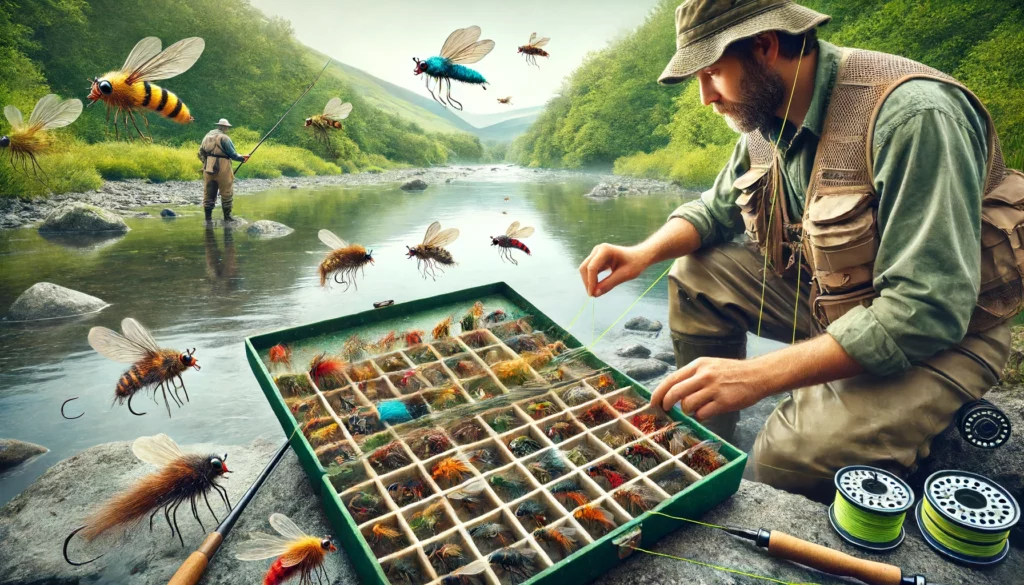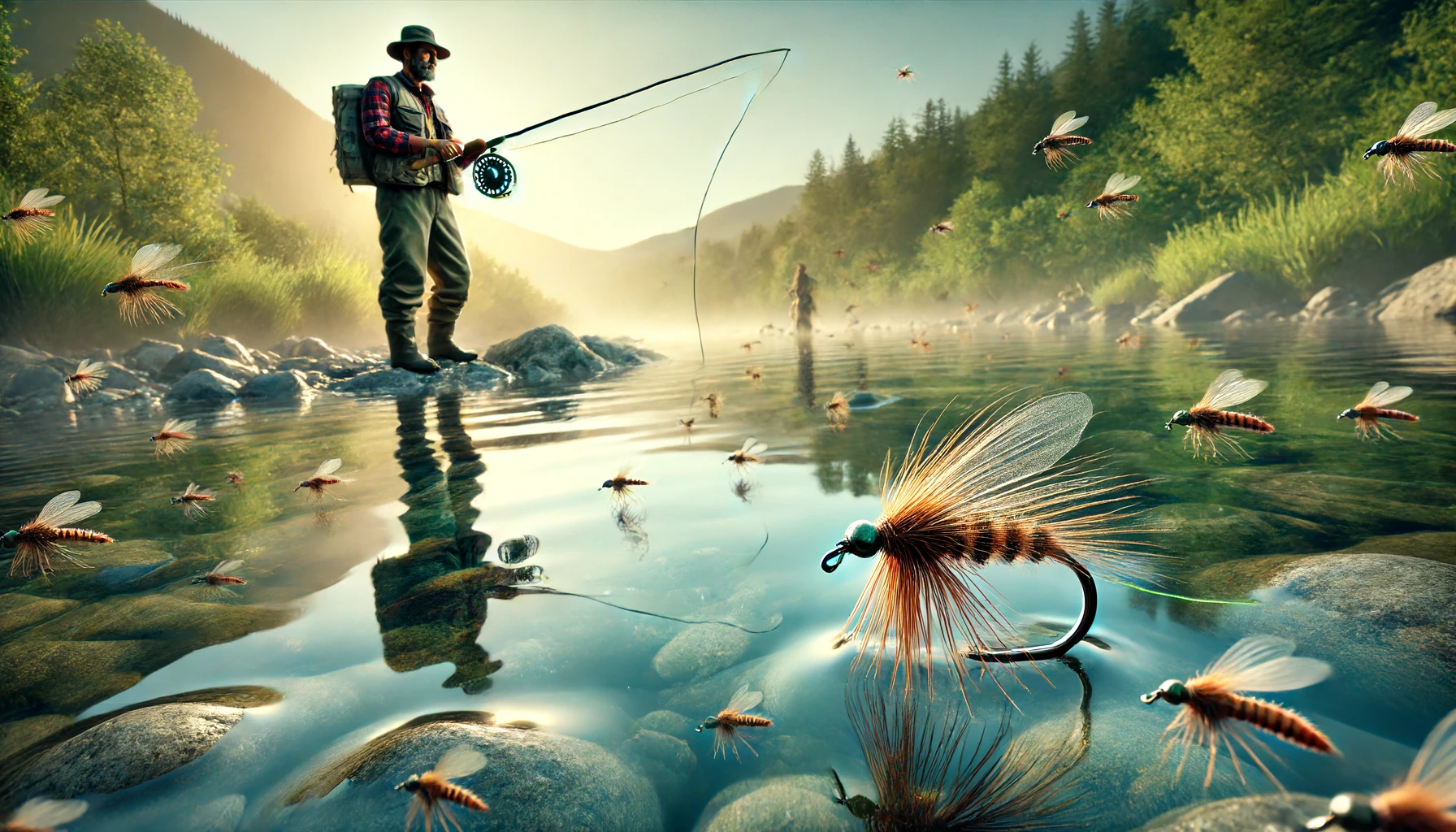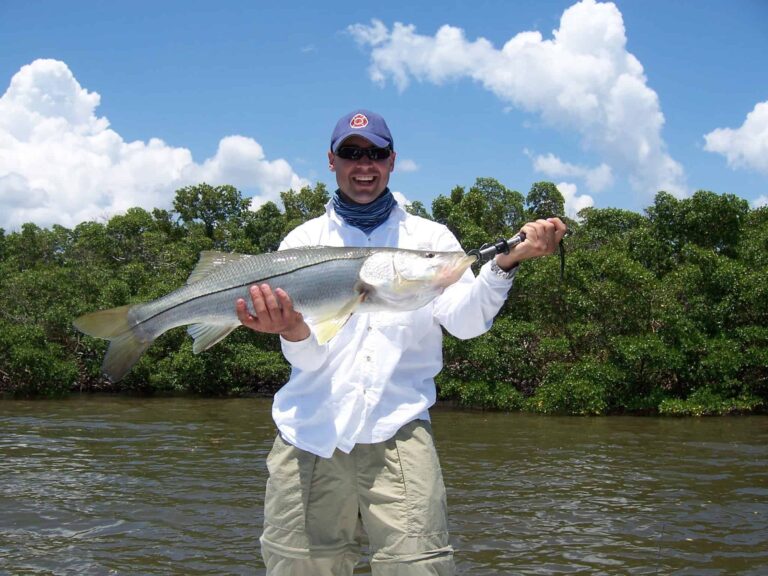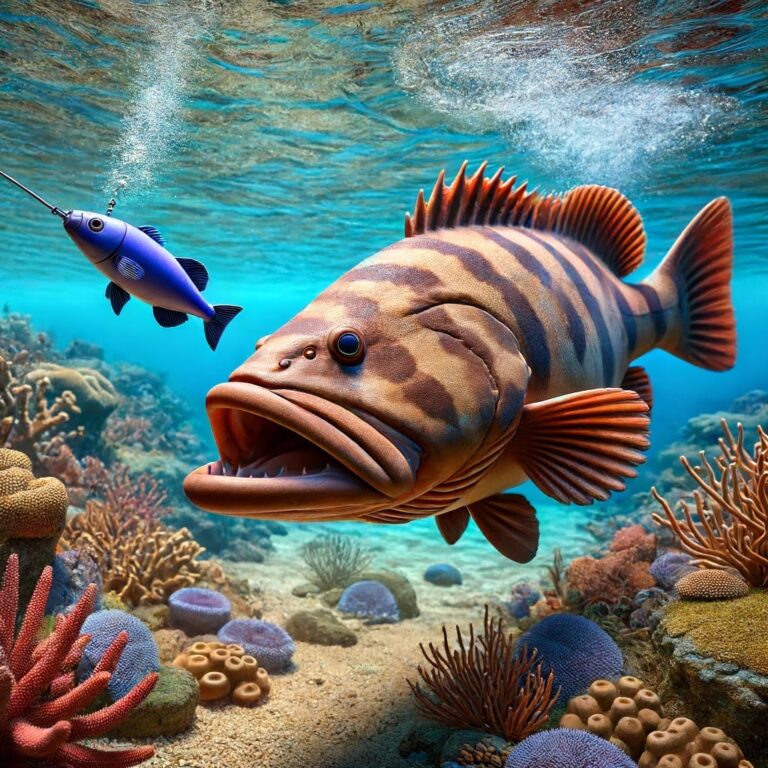The Importance of Matching the Hatch When Fishing
Fishing is a pursuit of patience, skill, and a touch of intuition.
It’s a blend of strategy and serenity, where success often hinges on the ability to read the water, understand fish behavior, and adapt accordingly.
One technique that stands out in the angler’s playbook is “matching the hatch.”
It’s a term that might sound like a cryptic riddle, but it’s a straightforward concept with profound implications.
In this post, we’ll dive deep into why matching the hatch can be crucial when fishing and how it can elevate your fishing game to new heights.

What Does “Matching the Hatch” Mean?
Let’s start with the basics.
“Matching the hatch” is a term primarily used in fly fishing, but the principles apply to all forms of fishing.
It refers to the practice of selecting flies or lures that closely resemble the insects or other prey currently being fed on by fish in a particular body of water.
The “hatch” in question is the emergence of aquatic insects from their larval stage to their adult form, which happens in large numbers and provides a significant food source for fish.
When you match the hatch, you’re essentially trying to mimic the size, shape, color, and behavior of the natural prey that fish are currently targeting.
This makes your artificial bait or lure appear more enticing and realistic to the fish, increasing your chances of a successful catch.
Understanding the Fish’s Perspective
To truly appreciate the importance of matching the hatch, it’s essential to put yourself in the fish’s fins.
Fish are opportunistic feeders, and their diet largely depends on what’s available in their environment.
During a hatch, fish can become highly selective, gorging themselves on the abundant prey and often ignoring anything that doesn’t resemble their current food source.
Imagine walking into a buffet with your favorite dishes laid out in front of you.
Would you go for a mystery dish that looks nothing like what you usually eat, or would you stick with the familiar favorites?
Fish behave similarly.
When their preferred prey is readily available, they’re less likely to take a chance on something unfamiliar.
By matching the hatch, you’re offering them a familiar and appealing option, increasing the likelihood that they’ll bite.
The Science Behind Matching the Hatch
Matching the hatch isn’t just about choosing the right fly or lure—it’s about understanding the lifecycle of aquatic insects and other prey species.
Different insects hatch at different times of the year, and their presence can vary based on water temperature, weather conditions, and geographical location.
Here’s a quick rundown of common aquatic insects and their hatching patterns:
Mayflies
Mayflies are one of the most well-known hatches in the fly fishing world.
They have a short lifespan, and their emergence can cause a feeding frenzy among fish.
The nymphs rise to the surface, shed their exoskeletons, and become adults in a matter of hours.
Matching the hatch during a mayfly emergence involves using flies that mimic both the nymph and adult stages.
Caddisflies
Caddisflies are another prevalent insect in freshwater ecosystems.
They have a longer life cycle than mayflies, spending much of their lives as larvae before emerging as adults.
Fish will feed on caddis larvae, pupae, and adults, so having a variety of imitations in your tackle box is key.
Stoneflies
Stoneflies are larger insects that hatch less frequently but can still trigger significant feeding activity.
They are typically found in fast-flowing, well-oxygenated waters.
Stonefly nymphs are a favorite food for many fish species, making them an excellent choice for matching the hatch.
Midges
Midges are small, delicate insects that can be found in almost any body of water.
They hatch year-round, making them a consistent food source for fish.
Matching a midge hatch often involves using very small, delicate flies that can be challenging to tie and cast but are incredibly effective.

Practical Tips for Matching the Hatch
Now that we’ve covered the basics, let’s get into the nitty-gritty of how to match the hatch effectively.
Here are some practical tips to help you master this essential fishing technique:
Observe the Water
The first step in matching the hatch is to observe your surroundings.
Pay close attention to what’s happening on the surface of the water and along the banks.
Look for signs of insect activity, such as flies hovering above the water or emerging from the surface.
Use a small net or your hands to capture some of the insects and take a closer look at their size, color, and shape.
Examine Fish Behavior
Fish behavior can provide valuable clues about what they’re feeding on.
Look for rising fish, which often indicate that they’re feeding on insects at or near the surface.
Splashing or jumping fish can suggest an active hatch.
If you see fish feeding but can’t identify the prey, try using a small seine net to capture samples from the water column.
Match Size and Color
Once you’ve identified the insects, choose flies or lures that closely match their size and color.
Pay attention to the details—fish can be surprisingly selective, and even small discrepancies can make a difference.
If you’re fly fishing, carry a variety of patterns in different sizes and colors to cover your bases.
Consider the Life Stage
Insects go through various life stages, and fish may prefer one stage over another at any given time.
Have imitations of nymphs, pupae, and adults in your arsenal.
If fish are feeding just below the surface, try using emergers or cripple patterns that mimic insects struggling to break free from their exoskeletons.
Adjust Your Presentation
Matching the hatch isn’t just about choosing the right fly or lure—it’s also about how you present it.
Pay attention to how the natural insects are moving and try to replicate that action.
Dead-drift nymphs and emergers with minimal movement, or use short, quick strips to mimic swimming insects.
Experiment with different retrieves and presentations until you find what works.
The Importance of Flexibility
While matching the hatch is a powerful technique, it’s essential to remain flexible and adaptable.
Conditions on the water can change quickly, and what worked one day might not work the next.
Be prepared to switch tactics if the fish aren’t responding to your initial choices.
Carry a variety of flies and lures, and don’t be afraid to try something different if you’re not having success.
Seasonal Changes
Different insects hatch at different times of the year, so it’s important to adjust your approach based on the season.
Spring and early summer often see significant hatches of mayflies, caddisflies, and stoneflies, while midges can be active year-round.
Pay attention to local hatch charts and reports to stay informed about what’s currently hatching in your fishing area.
Weather and Water Conditions
Weather and water conditions can also influence insect activity and fish behavior.
Overcast days might see more surface activity, while bright, sunny days could drive fish to feed deeper in the water column.
Water temperature, flow rates, and clarity can all impact insect hatches and fish feeding patterns.
Stay observant and be ready to adapt your strategy based on the conditions.
Local Knowledge
One of the best ways to stay informed about hatches and fish behavior is to tap into local knowledge.
Talk to other anglers, visit local tackle shops, and join fishing forums or clubs.
Experienced local anglers often have valuable insights into the best times and places to fish, as well as what hatches to expect.
Building a network of fellow fishing enthusiasts can significantly enhance your fishing success.
Matching the Hatch: Beyond Fly Fishing
While matching the hatch is often associated with fly fishing, the principles can be applied to other forms of fishing as well.
Whether you’re using spinning gear, baitcasting, or even ice fishing, understanding the local prey species and mimicking their appearance and behavior can improve your catch rate.
Lure Selection
In conventional fishing, choosing the right lure can make all the difference.
Just like in fly fishing, selecting lures that closely resemble the size, color, and action of the local prey can entice more bites.
Crankbaits, soft plastics, jigs, and spoons all come in a variety of patterns designed to mimic different prey species.
Pay attention to the forage base in your fishing area and choose lures that match.
Bait Fishing
When fishing with live or cut bait, matching the hatch can still play a crucial role.
Using bait that closely resembles what the fish are currently feeding on can increase your chances of success.
Whether it’s worms, minnows, or insect larvae, selecting the right bait can make a significant difference.
Pay attention to what local bait shops recommend and observe what other anglers use.
Ice Fishing
Even in the frozen world of ice fishing, matching the hatch remains relevant.
Fish under the ice can be just as selective as those in open water.
Using jigs and lures that mimic the local prey species can help you catch more fish.
Pay attention to the aquatic insects and small fish present in the area and choose your lures accordingly.
The Joy of Matching the Hatch
There’s something deeply satisfying about successfully matching the hatch.
It’s a blend of art and science, requiring keen observation, knowledge, and a bit of intuition. When you get it right, the rewards are often immediate and exhilarating.
The tug on the line, the flash of silver as the fish breaks the surface, and the thrill of a successful catch—all these moments are amplified when you’ve put in the effort to understand and replicate the fish’s natural prey.
Matching the hatch also fosters a deeper connection with the environment.
It encourages anglers to pay attention to the intricate details of nature, to understand the delicate balance of ecosystems, and to appreciate the beauty of aquatic life.
It’s a reminder that fishing is not just about the catch, but about the experience, the learning, and the respect for the natural world.
Conclusion
Matching the hatch is more than just a fishing technique; it’s a philosophy that embodies the essence of angling.
It’s about understanding the fish’s world, adapting to their preferences, and immersing yourself in the intricate dance of predator and prey.
Whether you’re a seasoned fly fisher or a casual weekend angler, mastering the art of matching the hatch can transform your fishing experience.
You can learn a lot from your preferred fishing location
It is well worth dedicating the time to study that environment, expand your knowledge, and align your bait choice with the natural prey present.
Embrace the challenge, enjoy the process, and relish the satisfaction of outsmarting your finned adversaries.
In the end, it’s these moments of connection and understanding that make fishing not just a hobby, but a lifelong passion.




